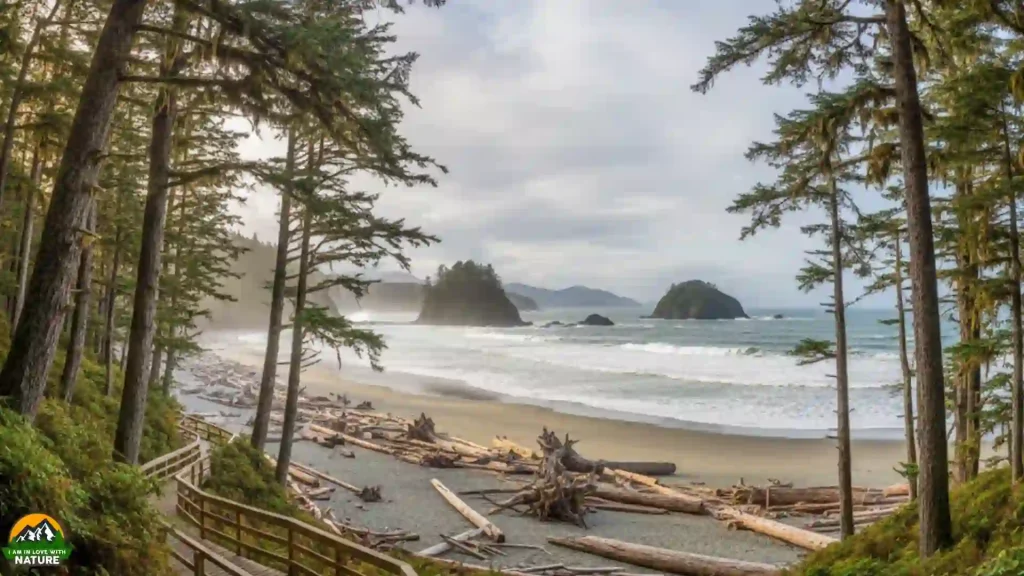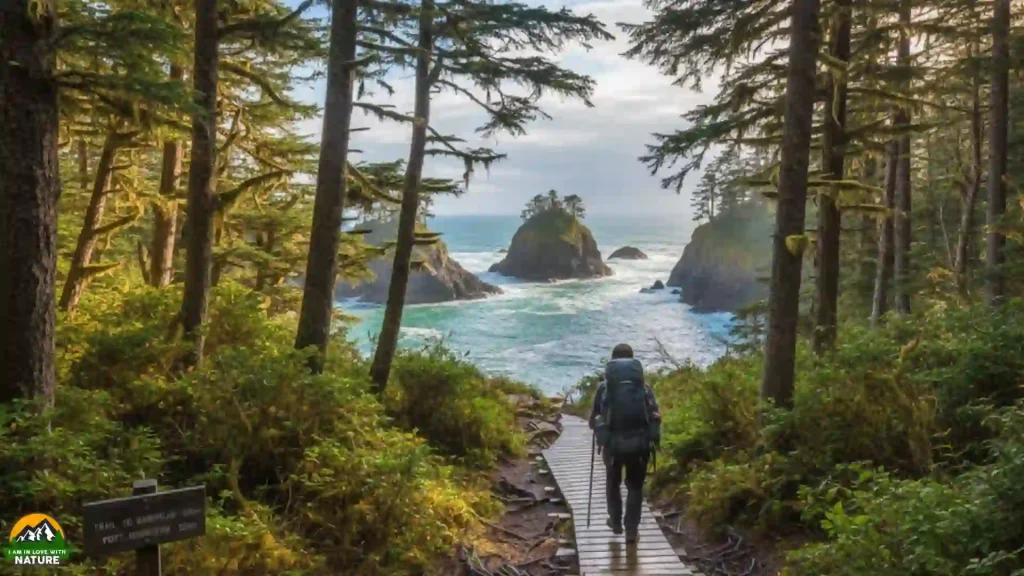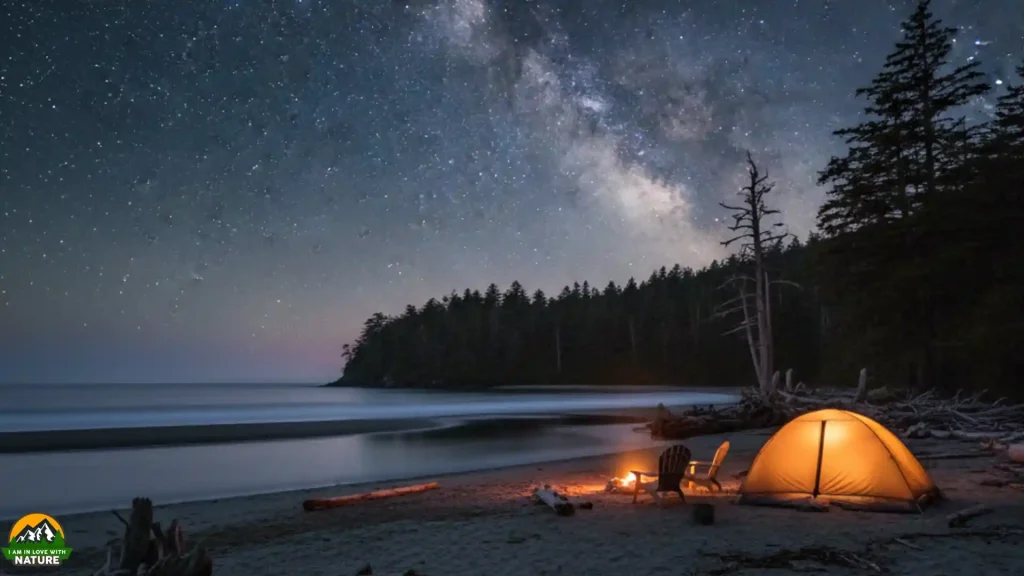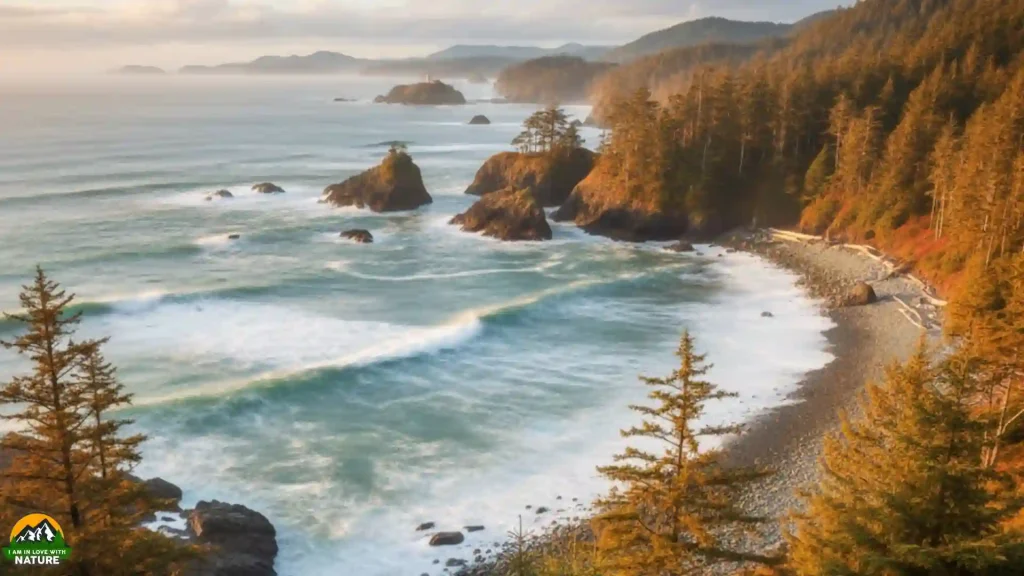Imagine standing on a vast, windswept beach where massive waves crash against rugged shores, surrounded by towering ancient cedars and the calls of seabirds echoing in the mist. That’s the magic of Pacific Rim National Park Reserve, a coastal gem that draws adventurers seeking raw natural beauty and thrilling outdoor experiences. Spanning over 511 square kilometers on Vancouver Island’s wild west coast, this park offers a perfect blend of serene beaches, challenging hikes, and marine wonders. Whether you’re chasing sunsets on endless sands or paddling through island archipelagos, here’s everything you need to know to make your visit epic.
What Makes Pacific Rim National Park Reserve So Special?

Nestled in the traditional territories of the Nuu-chah-nulth First Nations, the park is divided into three distinct units, each with its own unique vibe and attractions. The Long Beach Unit is all about accessible coastal fun, with miles of sandy shores ideal for beachcombing and surfing. The Broken Group Islands, a collection of over 100 islets in Barkley Sound, cater to kayakers and boaters exploring sheltered coves and vibrant marine life. Then there’s the West Coast Trail Unit, home to the legendary 75-kilometer backpacking route that’s a bucket-list challenge for serious hikers.
The park’s biodiversity is staggering—think temperate rainforests teeming with ferns, moss-draped trees, and wildlife like black bears, wolves, and gray whales. It’s not just a place to visit; it’s a living classroom on ecology and Indigenous heritage, with interpretive programs that dive into the area’s cultural and natural history. Plus, its UNESCO Biosphere Reserve status highlights ongoing conservation efforts to protect this pristine environment from climate impacts and human activity.
Best Time to Visit for Maximum Thrills
Timing your trip can make all the difference. Summer (June to September) brings milder weather, with temperatures hovering around 15-20°C (59-68°F), perfect for hiking and water activities. This is peak season, so expect crowds, but it’s when the West Coast Trail and Broken Group Islands are fully open—from May 1 to September 30. For a quieter experience, shoulder seasons like spring (April-May) or fall (October) offer blooming wildflowers or dramatic storm watching, where massive Pacific waves put on a show.
Winter visitors brave cooler, wetter conditions for solitude and epic storms, but check for closures. As of 2025, be aware of ongoing roadwork on Highway 4 between Tofino and Port Alberni, causing delays from July to December—plan extra time and monitor DriveBC for real-time updates. Also, seasonal dog bans at Combers Beach (April 1 to October 1) protect migratory birds, and fire bans may be in effect during dry spells, like the one starting July 17, 2025.
Top Things to Do: From Beach Bliss to Adrenaline Rushes
Pacific Rim isn’t just about sightseeing—it’s about immersion. Here are the must-dos that will keep you hooked.
Surf and Stroll the Iconic Long Beach

Stretching 16 kilometers, Long Beach is the park’s crown jewel. Grab a board and hit the waves; it’s one of North America’s top surfing spots, with rentals and lessons available in nearby Tofino. Not a surfer? Wander the tide pools at low tide to spot starfish, anemones, and crabs, or cycle the multi-use path for scenic views. Don’t miss storm watching in winter—waves can reach 10 meters high, creating a mesmerizing spectacle.
Paddle Through the Broken Group Islands
For a true escape, kayak or canoe among these emerald isles. Sheltered bays and white-shell beaches invite snorkeling amid kelp forests teeming with sea otters, seals, and colorful fish. Backcountry camping here feels like your own private paradise, but permits are required. Guided tours from Ucluelet make it accessible for beginners, blending adventure with tranquility.
Conquer the West Coast Trail

This 75-kilometer trek is legendary for its ladders, cable cars, and beach sections, weaving through rainforests and past shipwrecks. It’s demanding—expect mud, roots, and tidal crossings—but rewards with stunning vistas and a sense of accomplishment. Open May to September, reservations are essential, and orientation sessions cover safety. Recent winter storms have left some sections rugged, so check trail conditions before heading out.
Explore Rainforest Trails and Hidden Gems
Short on time? Hit the Rainforest Trail for boardwalk loops through ancient cedars and ferns—it’s like stepping into a fairy tale. The Canso Plane Crash Hike leads to a WWII bomber wreck, adding a historical twist. For panoramic views, climb Radar Hill or trek the Nuu-chah-nulth Trail to learn about Indigenous stewardship. AllTrails lists top routes like Cox Bay Lookout for sunset hikes.
Wildlife Watching and Cultural Experiences
Spot gray whales migrating from March to October, or watch eagles soar overhead. The Kwisitis Visitor Centre offers exhibits on marine ecosystems and Nuu-chah-nulth culture—don’t skip the interactive displays. Join guided walks or workshops for deeper insights into the park’s role in conservation, including efforts to protect species like wolves and bears. Recent incidents, like a black bear struck by a vehicle in August 2025, underscore the need for mindful driving.
Where to Stay: Camping Under the Stars

Camping is the way to go for full immersion. Green Point Campground in the Long Beach Unit offers RV sites, tents, and even oTENTiks (glamping tents) with ocean views—book via Parks Canada’s reservation system. Backcountry options in the West Coast Trail and Broken Group provide primitive sites for a rugged experience. Nearby towns like Tofino and Ucluelet have lodges, resorts, and eco-hotels if you prefer comfort after a day of exploring.
Safety Tips and Essential Know-How
The park’s wild side demands respect. Always check tides before beach walks to avoid being stranded, and carry bear spray—encounters are possible, especially after recent wolf warnings. Follow Leave No Trace principles, and file a trip plan for backcountry adventures. Fees include daily passes (around $11 CAD for adults, free for youth) or annual Discovery Passes for unlimited access. Download maps from the official site, and note that cell service is spotty—prepare offline.
In 2025, watch for impacts from the Mt. Underwood wildfire affecting nearby areas, though the West Coast Trail remains open with precautions. Cultural events, like ceremonies for washed-up whales, may close sections temporarily, honoring Indigenous traditions.
Getting There: Your Gateway to the Wild West Coast
Fly into Vancouver or Victoria, then drive or bus to Port Alberni before heading west on Highway 4—a scenic 2-3 hour journey. Ferries from Washington State (e.g., Seattle to Victoria) make it easy for cross-border trips. Once there, shuttles and bike rentals help navigate without a car.
Ready to dive into this coastal wonderland? Pacific Rim National Park Reserve isn’t just a destination—it’s a story waiting to unfold, where every wave and trail whispers adventure. Pack your sense of wonder, and let the Pacific’s rhythm pull you in. What’s your first stop going to be?

What is the best time to visit Pacific Rim National Park Reserve?
The best time to visit is from May to September, when the weather is warmer and drier, making it ideal for hiking, camping, and beach activities. However, the winter months (November to March) are increasingly popular for “storm watching” along the coast. If you plan to hike the West Coast Trail, it is only open from May 1st to September 30th.
Do I need a pass to enter Pacific Rim National Park Reserve?
Yes, all visitors must purchase a National Park Entry Pass to stop and use the park facilities, trails, or beaches. You can buy a daily pass, an annual park pass, or use a Parks Canada Discovery Pass (valid for all national parks). Passes must be displayed clearly on your vehicle’s dashboard or carried with you if you are hiking.
Are dogs allowed in Pacific Rim National Park Reserve?
Dogs are permitted in the Long Beach Unit but must be kept on a leash at all times to protect wildlife and shorebirds. However, dogs are strictly prohibited on the West Coast Trail and in the Broken Group Islands (except for service dogs). Additionally, seasonal bans may apply to specific beaches, such as Combers Beach, to protect migrating birds.
Can you swim in the ocean at Pacific Rim National Park?
Swimming is allowed, but the water is extremely cold year-round (averaging 7°C to 14°C), so a wetsuit is highly recommended even in summer. The ocean here is powerful with strong rip currents and unpredictable waves, so exercise extreme caution. There are no lifeguards on duty at the beaches, so visitors swim at their own risk.
Do I need a reservation for camping in the park?
Yes, reservations are highly recommended, especially for the popular Green Point Campground, which books up months in advance for the summer season. Backcountry camping in the Broken Group Islands and hiking the West Coast Trail also require specific permits and reservations. You can book these through the Parks Canada Reservation Service.
What are the main areas of Pacific Rim National Park Reserve?
The park is divided into three distinct units: Long Beach, known for accessible beaches and surfing; the Broken Group Islands, a paradise for kayakers accessible only by boat; and the West Coast Trail, a world-famous, challenging multi-day backpacking route. Most casual visitors stick to the Long Beach Unit as it is the only one accessible by car.


